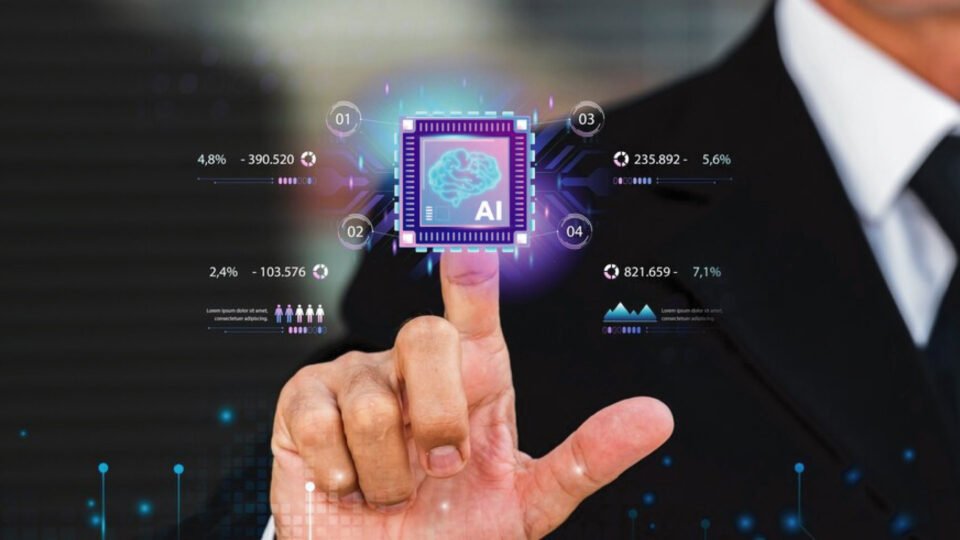Discover how generative AI empowers various industries to fuel innovation and bridge the gap between imagination and reality.
Table of Contents
1. How Does Generative AI Work?
2. Best Generative AI Applications
Introduction
Artificial intelligence (AI) holds an essential role in reshaping various industries and driving progress, as it can process vast amounts of data and derive valuable insights, enabling IT professionals, researchers, scientists, and more in various industries to make smarter and more data-driven decisions. This reliance on making decisions and executing tedious tasks can be eased with generative artificial intelligence (Generative AI or Gen AI), as it helps generate innovative solutions and strategic foresight by interpreting data on a large scale.
In recent years, with the popularity of generative AI tools like ChatGPT, PyCharm, Midjourney, Speak AI, and many more, businesses have been able to generate new ideas, solutions, and content faster, which helps streamline operations and allows businesses to stay ahead of a competitive and ever-evolving market.
This article delves into how generative AI works, the popular applications, and the use cases across industries.
1. How Does Generative AI Work?
Generative AI models use neural networks to identify patterns and structures with the help of existing data in the form of audio, text, or visuals to generate new and original content for their users. For instance, a popular application like GPT-3 allows users to generate essays based on short text requests.
With this data, generative AI can then step beyond just generating imitative content and also create a realm for multi-tasing and even create foundation models with the help of unsupervised or semi-supervised learning for training. For example, one stable diffusion, which is used as a base for AI systems to perform multiple tasks, allows users to understand the power of language.
2. Best Generative AI Applications
Generative AI is a powerful tool that helps streamline workflows for users from different industries. With the help of genetic AI models, one can take inputs like text, visual, audio, and code to generate new or modified solutions.
Let’s take a quick look at the best generative AI applications that may help enhance business operations.
2.1. Visual Applications
Generative AI applications simplify video production through highly flexible and efficient features that generate high-quality video content. Using generative AI models, video applications can automate tedious jobs like animations and video compositions, adding special effects, editing video snippets, etc.
Besides video generation, Gen AI also helps in 3D shape generation to build 3D models and shapes with autoregressive models, like GANs (generative adversarial networks) and VAEs (variational autoencoders).
2.2. Audio
Generative AI in audio models uses machine learning (ML), AI, and algorithms to create new sounds from existing data, like background scores, audio recordings, and speech-to-sound effects. After training the model, it can create new audio that is original and unique.
Gen AI audio tools like MusicLM, AudioLM, and OpenAI’s Whisper can develop songs and audio clips with the help of text input, videos with recognizable objects, and the surround sound of different video and audio footage.
2.3. Text Generation
One of the best examples of a text-generative AI tool is ChatGPT, which can create and also summarize textual content with prompts. Such Gen AI models are well-trained on large data sets to generate updated and authentic content. Furthermore, these tools can be fine-tuned to translate any language by analyzing the text.
Generative AI also powers virtual assistants and chatbots, especially during the holiday season, to generate relevant and natural responses in real-time when conversing with the user.
2.4. Coding
Generative AI applications are also helping in software development and coding through innovative solutions that streamline coding, improve code quality, and enhance productivity. Many IT organizations have started training and implementing generative AI models for coding, as it helps in predicting future codes that developers may need to speed up the coding process and also reduce possible errors.
2.5. Image Generation
One of the most common applications of generative AI is image generation, which is text-to-image conversion. The user enters a textual prompt to describe the type of image they desire, and the AI tool will process and generate a realistic image. Apart from text-to-image, Gen AI can also be used to modify or alter images in terms of color, texture, lighting, or style while maintaining the originality of the image.
Conclusion
In conclusion, generative AI transcends the realm of mere artistic exploration, presenting itself as a powerful tool across various industries. Generative AI has not only emerged as a tool but as a collaborator for IT professionals, scientists, researchers, engineers, and many more to create ideas, solutions, and content of different forms through audio, visual, text, language, and coding; this will optimize workflow and spark a creative breakthrough. IT visionaries believe that generative AI offers a bridge between technical expertise and limitless possibilities.
Visit AITechPark for cutting-edge Tech Trends around AI, ML, Cybersecurity, along with AITech News, and timely updates from industry professionals!


